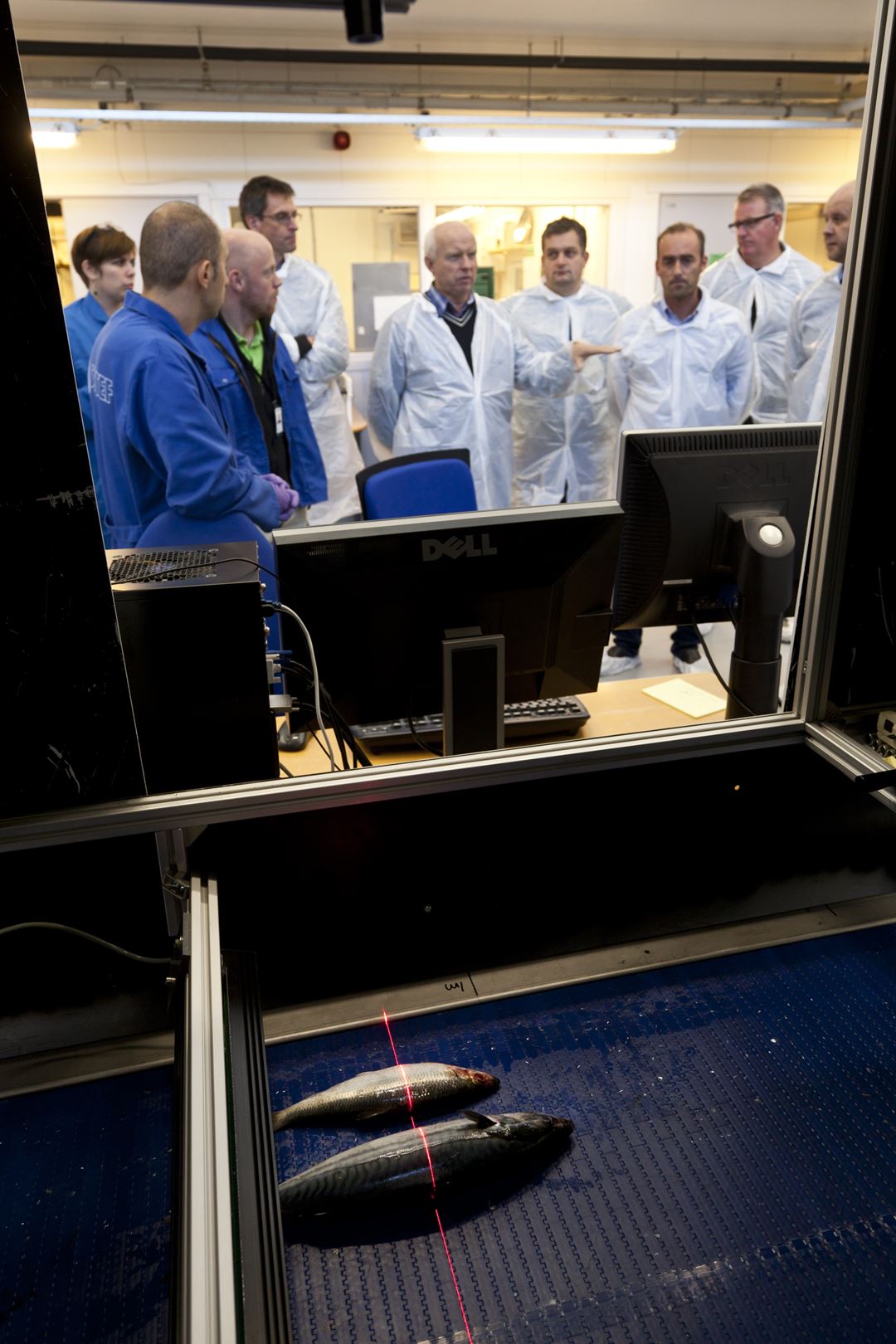The biggest challenge in fish handling of variations in the biomass. Using machine vision, lighting and data processing for grading of the fish, the automated line will be able to sort the fish with higher speed and accuracy than we can today. MMC AS would like to have a prototype installed next fall and the goal is that the product should be available for sale in 2013.
Automated processes for increased profit
Those attending got to see a demonstration of the prototype that will provide a strong improvement of weight while also sorting detecting quality criteria such as color, cuts and not least type of fish. In full operation the machine will be able to sort 50-60 tonnes of mackerel or herring by the hour. Although the volume of fish handled per hour is impressive, it is the increased accuracy in the estimation of weight that will provide the greatest benefit. If you achieve a higher utilization in the plant (machinery, sorting and personnel) on merely 2% it would be an equivalent to 80 million per year in increased profits on the quota. - With higher accuracy, the fish are sorted into the correct categories and sold with the right price. Today, there are coarse sorting systems and we sort high priced fish into the lower price ranges to be on the safe side. Such a sorting line will provide increased profits for factory owners, said lead researcher Stein Ove Østvik. With greater accuracy on weight and size, we can also tune other equipment with greater precision. The filet machine for example, could be adjusted to sizes within a smaller area and thus you achieve a greater yield from the fish.
Machine vision and laser
The prototype is based on camera technology and automated detection. By replacing the human eye, head and hand with computers, we can improve processes, but can also do things that are impossible for humans to do. Automatic detection of fish as it was demonstrated means that the fish are photographed and analyzed in milliseconds so that it can be sorted in the correct class. There are not many other professionals who work with machine vision and automation to the fishing industry, so we learn from machine vision projects carried out in other areas.
What must be done in the industry?
The prototype has software and functionality and is ready for testing in the industry relatively quickly. But to ensure that this is a product that provides the desired effect, it is important to carry out future developments in close collaboration with the industry. The space limitations and robustness are challenges that must be resolved before a final product can be launched. -We are pleased that the industry is interested in looking at the possibilities offered by new technology and we hope this demonstration has been the seed for further cooperation, says Stein Ove Østvik.

